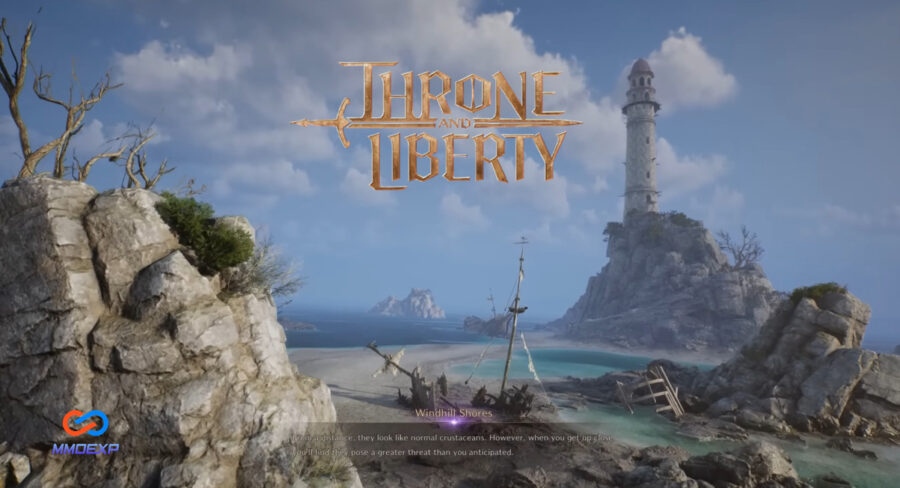In the expansive realm of Throne and Liberty, players are faced with the ubiquitous question: Is it pay-to-win? This article aims to unravel the intricacies of pay-to-win dynamics within the game, shedding light on the impact of financial investments on player progression. Additionally, we explore the role of speed in playing Throne and Liberty, with a spotlight on MMOexp. This analysis dives into the practicalities of pay-to-win elements, addressing the concerns of the average player and providing insights into the game’s endgame dynamics.
MMOexp Sponsorship:
The article opens with a discussion on speed and optimization in Throne and Liberty, introducing MMOexp as a solution to enhance the gaming experience. MMOexp is portrayed as a user-friendly application that optimizes gameplay, offering features such as an interactive map, account pre-own tutorial, and FPS boosts. The simplicity of the application and its ability to provide the best ping, assert that it outperforms other applications. The article includes a promotional offer for readers, encouraging gamers to take advantage of a 5% discount using the “exp32p” discount code to buy Throne and Liberty Lucent.
Pay-to-Win Dynamics:
Transitioning from the sponsorship segment, delves into the core question: Is Throne and Liberty pay-to-win? The unequivocal answer is “yes,” and the subsequent discussion aims to elucidate how pay-to-win mechanisms operate within the game.
Distinguishes between early-game and endgame pay-to-win elements. In the early stages, the focus is on battle passes, considered minimal pay-to-win features. The battle pass, available through monetary investment, provides players with rewards, offering a slight advantage in the leveling process. The article emphasizes that this initial pay-to-win aspect is acceptable, considering the game’s free-to-play nature.
Endgame Pay-to-Win Analysis:
As the narrative progresses, the article turns its attention to endgame dynamics, asserting that pay-to-win elements become more pronounced. The primary currency in this realm is TL Lucent, obtained through a $100 pack, which can be used in the trading market. The trading market operates exclusively with Lucent, giving paying players a significant advantage in acquiring items.
The article provides a detailed breakdown of how pay-to-win influences the acquisition of gear, emphasizing the possibility of outright purchasing epic items from the marketplace. The author contrasts the time-intensive process of grinding for epic gear with the immediacy of acquiring it through financial investment.
Deepening the Analysis:
Moving beyond gear acquisition, the article explores the nuances of gear enchanting and the acquisition of traits. Pay-to-win players are posited to have a substantial advantage in obtaining desired traits and maximizing their gear’s potential. The availability of trade gear for purchase on the marketplace is highlighted as a key advantage for paying players.
The snowball effect of pay-to-win dynamics is expounded upon, indicating that the more one invests, the more advantages they accrue in various aspects of the game. The article emphasizes the impact of pay-to-win on guild dynamics, asserting that powerful guilds are likely to be dominated by paying players with superior gear and traits.
Comparative Analysis:
In a comparative analysis, the article examines the potential for a non-paying, dedicated grinder to compete with paying players. The conclusion is that while a grinder can keep up with a paying player who grinds moderately, there’s a considerable disadvantage when competing with a paying player who grinds extensively.
The article acknowledges the importance of skill in the game but asserts that the pay-to-win dynamics significantly influence player strength. In a guild-centric game like Throne and Liberty, the advantage of having paying players in a guild is highlighted, contributing to the snowball effect of strength and dominance.
Conclusion:
Concluding the analysis, the article offers a mixed perspective on Throne and Liberty. While acknowledging its playability and enjoyability for free-to-play and casual players, it paints a clear picture of the advantages pay-to-win players possess, particularly in the endgame. The article leaves room for further exploration, promising a comprehensive 100-hour review that will delve into various aspects of the game. Overall, Throne and Liberty, according to the article, is undoubtedly pay-to-win, with potential implications for the gaming experience of different player profiles.


